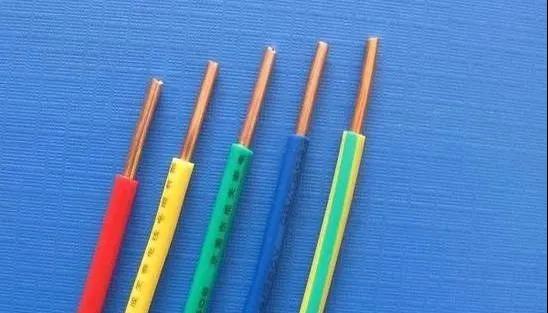The overhead insulated cable series products are composed of pressed copper, aluminum (aluminum alloy) conductors, inner shielding layer, weather-resistant insulating material and outer shielding layer. They not only have the power transmission characteristics of power cables, but also have strong mechanical properties of overhead cables. Compared with bare wires, this product has the characteristics of small laying spacing, high safety and reliability, and excellent resistance to atmospheric aging.
1. Uses of overhead insulated cables
Overhead insulated cable products are a new series of products for the transmission of electric energy over overhead transmission lines, and are preferred for power grid construction and transformation of 10kV transmission lines. It is the most suitable series product for line maintenance and safety. Production of flexible copper wire core 2. Implementation standards for overhead cables
1. 1KV overhead insulated cable: GB12527-90 is equivalent to the International Electrotechnical Commission IEC60502IEC227;
2. 10KV overhead insulated cable: GB14049-93 is equivalent to the International Electrotechnical Commission IEC60502.
Third, the characteristics of overhead insulated cables
1. Rated voltage: 0.6/1KV, 10KV;
2. The long-term allowable working temperature of the cable: 70℃ for PVC insulation and 90℃ for XLPE insulation.
3. When short-circuited (the longest time is no more than 5 seconds), the maximum temperature of the cable: 160°C for PVC insulation, 150°C for high-density polyethylene insulation, and 250°C for cross-linked polyethylene insulation;
4. The ambient temperature during cable laying is not lower than -20℃

5. Allowable bending radius of cable:
(1) Cables with rated voltage below 1KV: cables with an outer diameter (D) of less than 25mm should not be less than 4D, and cables with an outer diameter (D) of 25mm and above should not be less than 6D;
(2) The rated voltage of 10KV cable should not be less than 20 (D+d). Where: D—the actual outer diameter of the cable, d—the actual outer diameter of the cable conductor. This product is suitable for the lower lead of the transformer.
4. Type, name and purpose of overhead insulated cable
JKL copper core polyethylene insulated aerial cable
JKLY Aluminum Core Polyethylene Insulated Aerial Cable
JKYJ copper core XLPE insulated aerial cable
JKTRYJ soft copper core XLPE insulated aerial cable
JKLYJ aluminum core cross-linked vinyl insulated aerial cable
JKLHYJ aluminum alloy core XLPE insulated aerial cable
JKTRY soft copper core polyethylene insulated aerial cable
JKLHY aluminum alloy core polyethylene insulated aerial cable
Overhead fixed laying of soft copper core products is used for transformer down-conductor; when laying cables, a certain distance between cables and trees should be considered, and frequent contact between cables and trees is allowed during cable operation.
JKLYJ/B soft core natural color XLPE insulated aerial cable
JKLHYJ/B Aluminum alloy core natural color XLPE insulated cable
For overhead fixed laying and cable erection, a certain distance between the cable and the tree should be considered, and frequent contact between the cable and the tree is allowed when the cable is running.
JKLYJ/Q aluminum core light cross-linked polyethylene insulated aerial cable
JKLYHJ/Q aluminum alloy core light cross-linked polyethylene insulated aerial cable
JKLY/Q aluminum core light polyethylene insulated aerial cable
JKLHY/Q aluminum alloy core light polyethylene insulated aerial cable
Overhead fixed laying; When installing cables, consider keeping a certain distance between cables and trees. When cables are running, only short-term contact between cables and trees is allowed.
